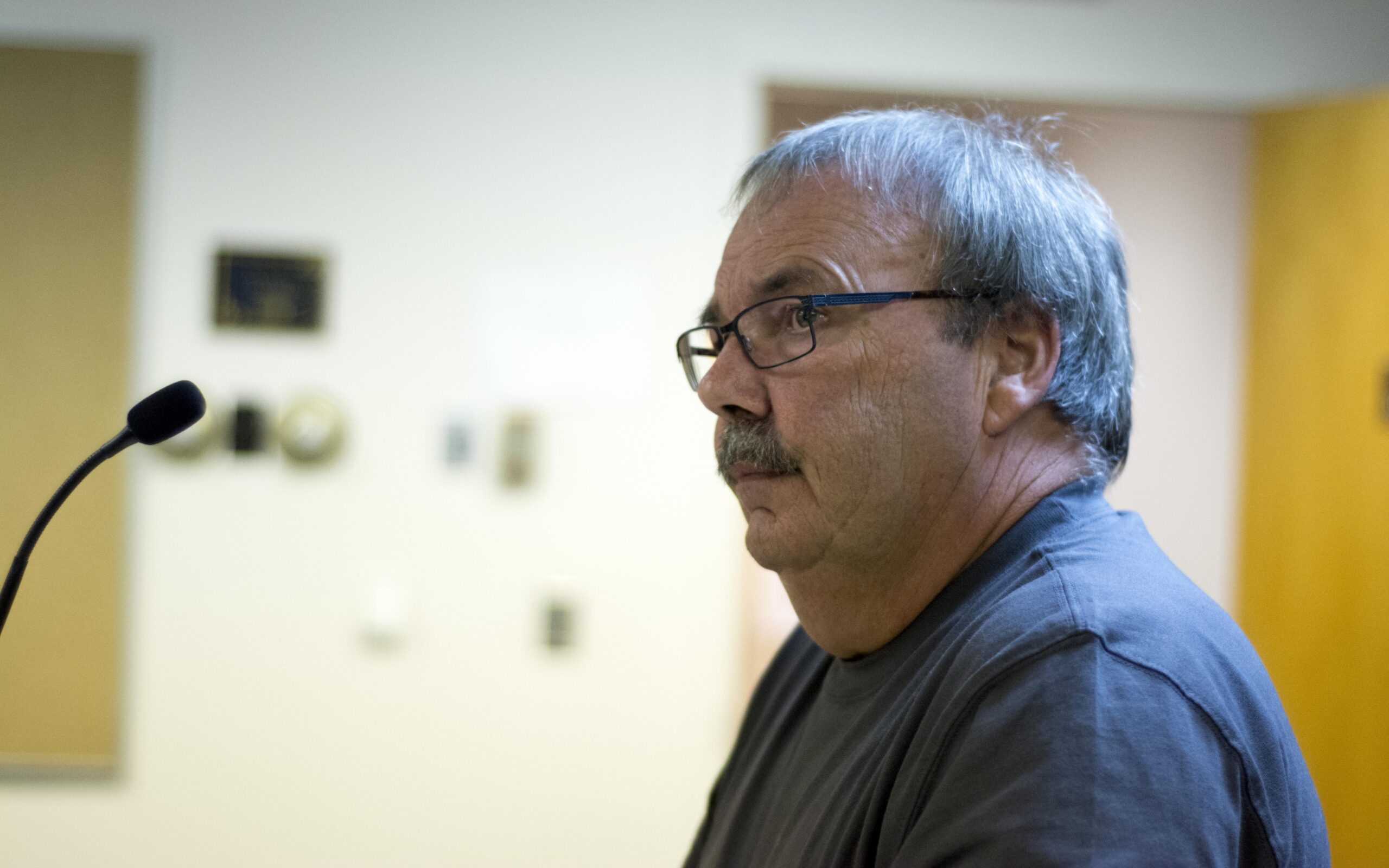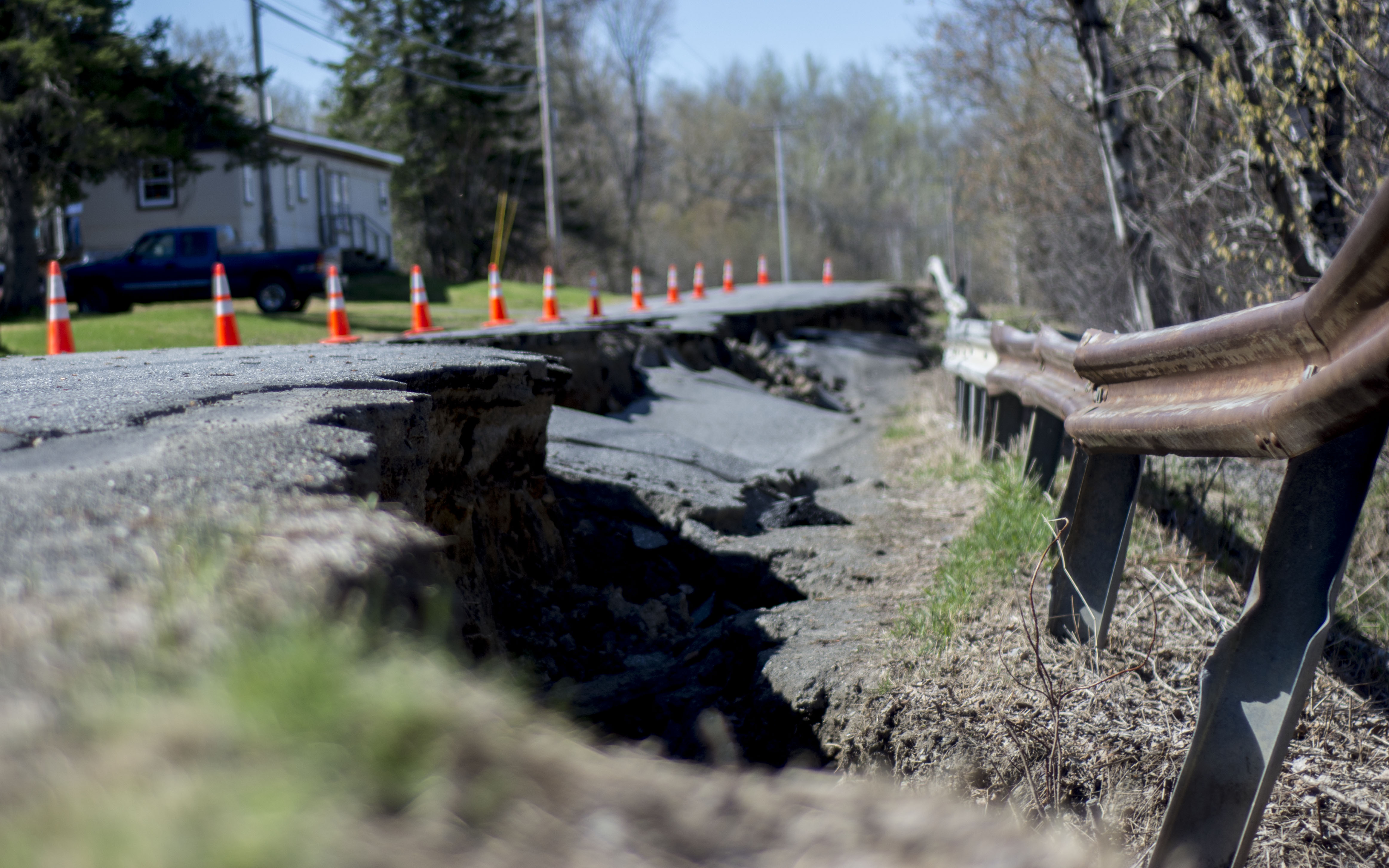
CARIBOU, Maine — Caribou residents and city officials were put in a rough spot this spring when rain and runoff severely cracked and damaged the River Road, resulting in a quarter mile stretch looking like it went through an earthquake.
Since then, the city has closed down the damaged portion of road, bought properties owned by residents in the affected area, and agreed to pay rent for residents forced to move into apartments. The city also hired DuBois and King, a local engineering firm, to assess the damage and give the city some options to resolve the problem.
The recently completed feasibility analysis presents the city four possibilities for repairing the damaged road.
The first option is to build a retaining wall between the road and the Aroostook River, and reconstruct the road in its original location for an estimated $1.4 million.
The second option would be to realign the road 30 feet to the east, away from the river and toward the properties. This option would require demolishing three properties, but also is the least expensive at $1.2 million.
Option three would be to construct a new road over an existing rail bed east of the current road, and to reroute the safe portions of the existing road to the new road. This option has the least impact on existing properties, but the estimated price is $2.6 million.
Option four is to drop the road down ten feet, which would require rebuilding sewer lines and acquiring at least three properties on the road. This alternative comes with an estimated $1.35 million price tag.
All price estimates, according to the engineering firm, take design, construction, and contingencies into consideration.
In their report, DuBois and King recommended option two, relocating the road 30 feet to the east, as it is the least expensive alternative, has no utility impact, and only carries minor permitting requirements.
While councilors ultimately did not vote on the matter, they expressed a preference for the first two alternatives, building a wall or realigning the road.
Councilor Joan Theriault said that if realigning the road can “still be as safe” as the first option, then she would prefer that alternative, and asked City Manager Dennis Marker if the retaining wall would impact adjacent properties.
Marker said that since engineers are not “into a final design, we don’t know all the impacts.”
Councilor Mark Goughan expressed concern that there are no guarantees with options one and two.
“In other words,” he said, “we could put in a retaining wall and the road could move again. I’m concerned, and maybe guarantee isn’t the right word, but there is no definite promise that this will solve the problem.”

A rift is evident in the River Road in Caribou on May 10. The deterioration began in late April when flooding and runoff from rain and melting snow saturated the soil under the roadway causing it to crack and split. A quarter-mile section of the road remains closed to traffic.
(Christopher Bouchard)
Marker said the engineers are confident that any of the suggested options will be designed to ensure the safety of nearby residents.
“They have to stand by any final design work as engineers,” Marker said, “which often means they over-engineer things to cover themselves.”
“I didn’t know that,” said Goughan.
Mayor David Martin said he sees the first two options as “costing the same” since the city will likely spend about $200,000 in purchasing the properties on the road, adding that it seemed like there was a consensus for those two choices.
Theriault asked Public Works Director Dave Ouellette if he had an opinion on building a retaining wall versus moving the road.
Ouellette, like Marker, said he was confident in the engineer’s findings and said that if the city is interested in saving three of the four affected homes, then “option one [the retaining wall] is the way to go.”
Martin suggested that, if the city owns the properties, officials could pass a temporary resolution allowing citizens to use part of the road that remains and drive as close to those residences as necessary until a permanent solution is found. He recommended having a hotline available to citizens who want to use that road during winter months so they avoid “meeting the snow plow” while on their commute.
Ouellette said it would be highly unlikely for cars to run into each other or the plow, as the one-lane area would only be a short distance and motorists would be able to see traffic on the other end.
He estimated that it would take roughly 500 yards of gravel to fill a nearby hole that was created and emphasized that this would only be a temporary fix, and would “not bring the road back.”
“My only concern,” Ouellette said, “is that the city would take liability because we put 500 yards of gravel in that hole. It could be something simple, but if the firm thinks that’s an option I think it would be fairly cheap to do.”
He suggested renting jersey barriers as well as a one lane traffic light for the impacted area.
Goughan said Ouellette could also use a portion of the front lawns of acquired properties for two-lane travel.
Ouellette said a utility pole would be in the way of doing that, and Marker suggested creating a smaller area for vehicles to pass one another if needed.
“This is probably getting more into the weeds,” Marker said, “but most likely for an engineer to OK putting this gravel in the hole, we’d need to show them the material and they would tell us how much we have to compact it. Basically, you’d have to do engineering for the temporary fix.”
“Why don’t we just do it?” Martin asked.
“We can do it,” said Ouellette, “as long as the city takes liability for it if something happens.”
Martin then asked him about the purpose of filling the sunken area of the road if motorists are not going to be driving in that lane.
“But what if the rest of the road fails?” Ouellette asked the mayor.
“You just told me you thought it was done moving.”
“I don’t believe it will,” said Ouellette, “but I’m not an engineer.”
Councilor Phil McDonough said that, in light of the new information, the city may not have had to purchase the River Road properties that it did.
“We had to buy those houses,” said Martin, “because they wouldn’t be able to live there this winter.”
“Then there’s no reason to put a temporary road in there, then,” McDonough said.
Martin said the purpose of the temporary fix is for the convenience of residents still living on the River Road, adding he believes it is a “worthy expense.”
Martin said he believed there was a consensus among councilors to look into pursuing a temporary fix during the winter, and asked Ouellette to determine the costs for doing so and come back to the council with that information at the next meeting. Councilors also are expected to revisit the options available for a more permanent solution to the River Road issue.




